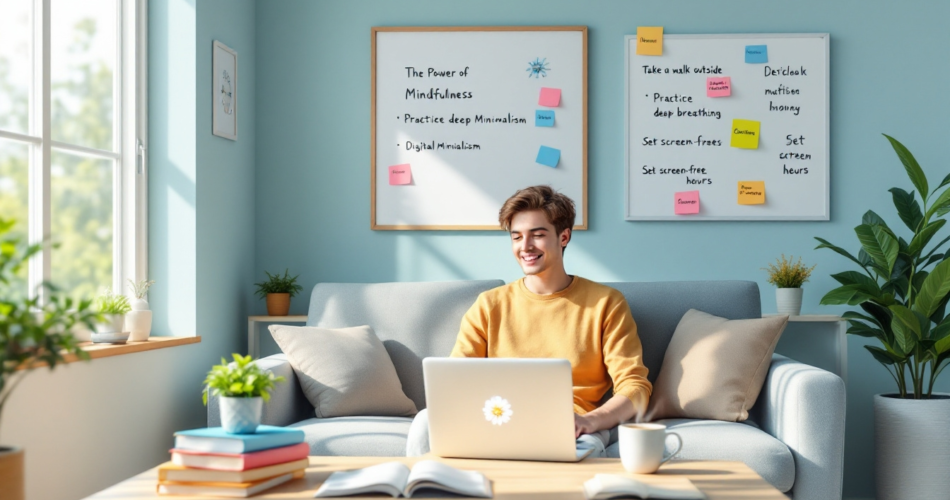Did you know the average person spends over 6 hours a day in front of a screen? That’s nearly a third of your day consumed by devices! Imagine how much more fulfilling your life could be if those hours were spent on meaningful activities. With technology taking center stage in our work and leisure, excessive screen time has become a significant concern for mental health, productivity, and relationships. The good news? It’s entirely possible to reduce your screen time and regain control over your life.
In this ultimate guide, we’ll explore actionable tips to reduce screen time, the benefits of a digital detox, and how you can sustain these changes in the long term. Let’s dive into reclaiming your well-being and making room for what truly matters.
Table of Contents
- What Is a Digital Detox and Why Does It Matter?
- Recognizing the Signs You Need a Digital Detox
- Effective Tips to Reduce Screen Time
- Benefits of a Digital Detox
- How to Sustain Your Digital Detox Efforts
- FAQs About Digital Detox and Screen Time Reduction
What Is a Digital Detox and Why Does It Matter?
A digital detox is the intentional act of taking breaks from electronic screens and digital devices like smartphones, tablets, and computers. It’s an opportunity to reset your relationship with technology, creating healthy boundaries that support mental and physical well-being.
Why is this important? Excessive screen time has been linked to issues like eye strain, disrupted sleep, and heightened levels of stress and anxiety. According to a study by Pew Research Center, over half of adults admit to feeling overwhelmed by their constant connectivity. A detox helps combat digital dependency and allows you to regain balance.
Recognizing the Signs You Need a Digital Detox
Physical Signs
Common physical symptoms of screen overuse include strained eyes, frequent headaches, and “tech neck”—a condition caused by poor posture while looking at your phone or laptop. If these sound familiar, it’s time to take a break.
Emotional Signs
If you feel irritable, anxious, or restless when you’re not checking your devices, it’s a clear indication of technology dependency. Constant exposure to social media can also lead to feelings of inadequacy or FOMO (fear of missing out).
Behavioral Signs
Do you find yourself compulsively scrolling on your phone instead of focusing on work or spending quality time with loved ones? Reduced productivity and strained relationships are major red flags signaling the need for a digital detox.
Effective Tips to Reduce Screen Time
Start with a Screen Time Audit
Begin by assessing your current screen usage using built-in tools like Screen Time on iOS or Digital Wellbeing on Android. These apps provide insights into how much time you’re spending on your device and which apps consume the most hours. Once you’ve identified your habits, set realistic goals to gradually cut back.
Create Screen-Free Zones
Designate specific areas in your home as “screen-free zones.” For instance, ban devices from the bedroom to improve sleep quality or the dining table to encourage meaningful conversations with your family. Share these boundaries with others in your household to make the practice more effective.
Replace Screen Time with Mindful Activities
Replacing screen usage with engaging, offline activities is crucial for sustaining your digital detox. Consider taking up a creative hobby, such as painting or gardening. Physical activities like yoga or simply enjoying a walk outdoors can also boost your mood and reduce the urge to check your device.
Benefits of a Digital Detox
Improved Mental Health
A digital detox can significantly reduce stress and anxiety, leading to better relationships with those around you. When you’re more present in your interactions, your connections naturally become stronger and more fulfilling.
Better Physical Health
Spending less time in front of screens helps reduce eye strain, improve posture, and enhance sleep quality. According to a study, reducing screen time even slightly can lead to better overall health.
Increased Productivity
Limiting digital distractions frees up mental space for focused work and creative pursuits. With fewer interruptions, you’ll accomplish tasks more efficiently and have more time for yourself.
How to Sustain Your Digital Detox Efforts
Build a Tech-Life Balance Routine
Develop long-term habits, such as setting a cutoff time for screen use in the evening or designating “device-free” hours during the day. These small adjustments help create a sustainable tech-life balance.
Leverage Accountability Tools
Use app blockers or reminders to limit access to time-draining apps. Partner with a friend or family member to hold each other accountable for sticking to your goals.
Frequently Asked Questions
What are some quick tips to reduce screen time without disrupting daily routines?
Simple strategies include turning off push notifications, enabling grayscale mode for your smartphone, and setting scheduled app usage limits.
How long does it take to see the benefits of a digital detox?
While you may notice initial improvements like better sleep within a few days, long-term benefits such as increased productivity and reduced stress typically emerge within a few weeks.
Can a digital detox help improve work performance?
Absolutely! By minimizing distractions and improving focus, a digital detox can enhance your ability to complete tasks effectively, ultimately boosting your overall job performance.
What’s the best way to encourage family members to reduce screen time?
Lead by example! Share the benefits you’ve experienced and set collective goals, like enjoying one screen-free family activity each week.
Is it okay to still use screens for necessary tasks during a detox?
Yes, the goal isn’t to eliminate all screen use but to be mindful and purposeful about how you use your devices.
Conclusion
By incorporating these tips to reduce screen time into your daily routine, you can enjoy improved mental health, better relationships, and greater productivity. A digital detox isn’t about giving up technology entirely—it’s about finding balance and using it more intentionally. Start your journey today, and don’t forget to share your progress or questions in the comments below!


